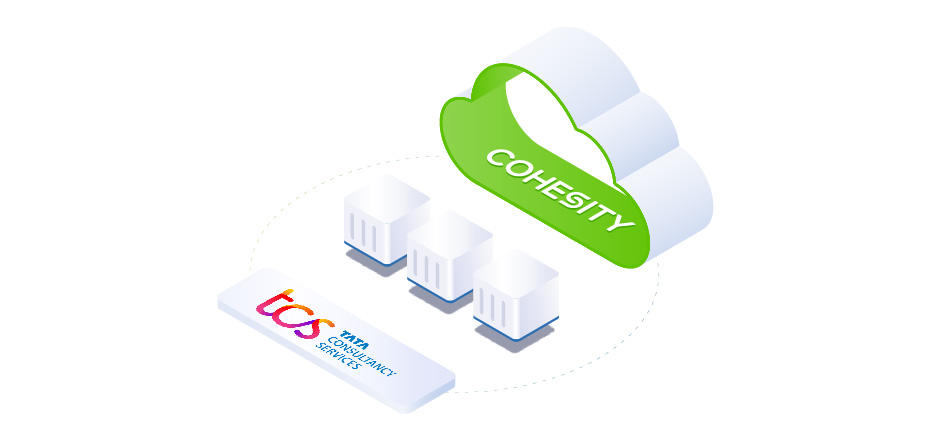Cloud has become the unifying digital fabric for enterprises worldwide. Cloud platforms are now the core to an organization’s innovation ecosystem, allowing conceptualization and deployment of new business models for them to transform and grow. As data volumes steadily increase, how can enterprises optimize cloud for an even greater advantage?
Among the easiest ways to keep pace with digital transformation and make decisions faster based on data-driven insights is turnkey data management. It’s ideal for not only protecting data onsite and across clouds but leveraging it for the agile dev/test and digital analytics that lead to innovation. Modern data management empowers enterprises that today are struggling to control growing volumes of data and migrate more of it to clouds. Next-gen data management also provides freedom to the companies investing too much time and money today on harnessing massively fragmented data and chasing ransomware threats—because they don’t have a centralized view of all of their data.
Legacy Data Management Burdens Enterprises
Traditional data management isn’t designed for digital business. When the global pandemic forced organizations to transition to remote workforces, ransomware attackers thrived. For many, it was the age-old adage scenario “so much data, so little time.” But now enterprises are becoming savvier about collapsing silos to prevent ransomware and do more with data. They’re modernizing data management — many preferring in the hybrid cloud — to strengthen their cyber resilience.
By taking this important modernization step forward, they are overcoming critical challenges of legacy data management solutions, including:
- Complex data management — In a multicloud/hybrid cloud environment, teams have had to manage many products (each with its own management console) from different vendors which increase total cost of ownership (TCO).
- Cyberattack vulnerable — Isolated data and siloed tools provide little visibility into ransomware entering environments.
- Lack of system intelligence — Without artificial intelligence and machine learning (AI/ML) features, teams have frequently been unable to analyze behaviors and offer data-driven intelligence to the business.
- High costs —Because older systems are dependent on master, media, and target storage, they can be expensive and burdensome on IT staff.
- Limited scalability —Adding more data often requires forklift system upgrades.
- Lengthy RPOs/RTOs — Data and file recoveries can be time and resource constraining actions.
Modern Data Management Delivers Freedom and Flexibility
In contrast to legacy approaches, next-gen data management consolidates fragmented data and helps eliminate silos by converging data onto an integrated and easy-to-manage platform. From a single user interface, teams gain visibility into their data wherever it resides — core, cloud, and edge locations—so they can better protect, detect, and if needed, rapidly recover large volumes of data instantly. Hyperscale next-gen data management delivers maximum flexibility and choice that helps reduce TCO and increase overall efficiency.
A built-in file system that provides data protection through immutable snapshots is designed to help ensure backup data is not impacted (modified/deleted) by malware or unauthorized users. In addition to immutability, next-gen data management also supports time-based Write Once Read Many (WORM), role-based access control (RBAC), multi-factor authentication (MFA), data encryption, and policy-based data isolation. Moreover, it supports ML-based detection that helps to uncover a potential ransomware attack in progress in the IT production environment.
Key Benefits of Next-Gen Data Management
- Helps eliminates siloed infrastructure — Consolidates infrastructure silos into a single, easy-to-use platform
- Seamless Integration into environment — Easily deployed on a wide range of certified servers, it seamlessly integrates into existing infrastructure (e.g., as NFS storage to third party backup products)
- Protection from cyberattacks — With built-in AI-powered insights for threat detection and instant mass restore of data at scale, businesses reduce risk
- Simplified management —Visibility and control over global operations — across core, cloud, and edge locations — with a single UI and one-click policies
- Reduced TCO and pay-as-you-grow model* — Utility-based pricing provides financial flexibility
- Cloud-agnostic — Bridges on-premises and public clouds (e.g. AWS, Azure, GCP) with cloud-agnostic capabilities, delivering cost-effective use cases such as long-term retention, storage tiering, disaster recovery (DR), and agile test/dev
- Powered by AI insights —Leverages AI/ML techniques to provide data insight
- Third-party extensible — Supported integrations and add-on marketplace apps strengthen security postures and ease workflows
* Pay-as-you-grow model available for select services.
TCS and Cohesity Simplify Data Management Within Cloud Fabric
Together, TCS and Cohesity are empowering enterprises to simplify their data stacks and further embrace cloud to address existing data management challenges. Specifically, they have enabled TCS Cognix™ to deliver Cohesity next-gen data management solutions, starting with backup, through the A3R (Agile, Adaptable, Autonomous and Resilient) framework where TCS discovers, analyzes, designs, and implements customer IT environments. TCS uses a holistic approach to address all aspects of the data center, hybrid infrastructure, and innovative technologies for a seamless customer experience.
TCS-Cohesity solutions are tailored to an enterprise’s unique needs and delivered as a service. A full suite of services, the partner combination makes it easy to protect, manage, and derive value from data across various data centers, multi-cloud, and edge locations. It also helps simplify backups, reduce costs, and make recovery agile, giving enterprises new ways to unlock opportunities and ensure business continuity.
The joint TCS-Cohesity solution has success stories across various use cases, industry verticals, and geographies. Learn more about the joint solution.

















